Introduction
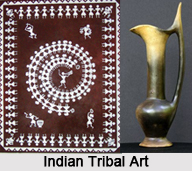 Indian Tribal Art gives a glimpse into India"s rich heritage. It is a unique collection of diverse styles and representation. It has become an intrinsic part of the country"s cultural identity. The Indian tribal art is rich in expression and is a living form very much with the times. Traditional Indian tribal Art tries to wholly recreate the immortal charisma of Indian tribal life. One can easily come across exquisite pieces of Indian tribal art in different parts of India.
Indian Tribal Art gives a glimpse into India"s rich heritage. It is a unique collection of diverse styles and representation. It has become an intrinsic part of the country"s cultural identity. The Indian tribal art is rich in expression and is a living form very much with the times. Traditional Indian tribal Art tries to wholly recreate the immortal charisma of Indian tribal life. One can easily come across exquisite pieces of Indian tribal art in different parts of India.
Development of Indian Tribal Art
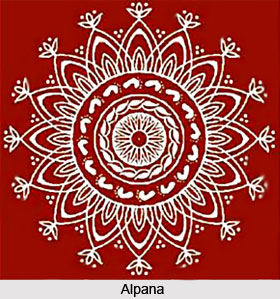 There has been a development of Indian tribal art since its inception. Fairs, festivals, local deities, Gods and Goddesses, legends, nature and animals play a vital role in the tribal painting in India. This traditional Indian tribal painting animates the immortal charm of Indian tribal life. Indian tribal art goes way beyond time in the history of India. Initially painting was done in black or earth colours, the palette soon expanded to include white, red, yellow, blue and green. From the onset of the 20th century, art slowly began to jump off the walls and on to palm leaves, wood blocks, cloth and ivory. Traditionally, the kinds of paintings found in India are: Alpana of Bengal, Kolam of South India, Rangoli of Maharashtra, Osa of Orissa, Aripana of Bihar, Sona Rakhna of Uttar Pradesh and Sathiya of Gujarat.
There has been a development of Indian tribal art since its inception. Fairs, festivals, local deities, Gods and Goddesses, legends, nature and animals play a vital role in the tribal painting in India. This traditional Indian tribal painting animates the immortal charm of Indian tribal life. Indian tribal art goes way beyond time in the history of India. Initially painting was done in black or earth colours, the palette soon expanded to include white, red, yellow, blue and green. From the onset of the 20th century, art slowly began to jump off the walls and on to palm leaves, wood blocks, cloth and ivory. Traditionally, the kinds of paintings found in India are: Alpana of Bengal, Kolam of South India, Rangoli of Maharashtra, Osa of Orissa, Aripana of Bihar, Sona Rakhna of Uttar Pradesh and Sathiya of Gujarat.
One can easily come across exquisite pieces of Indian tribal art in different parts of India. for instance, the eastern zone of India, like Orissa, West Bengal, Jharkhand and Bihar have a rich tradition of tribal art and the paintings they create have a deep rooted aesthetic value. The East part of India exhibits tribal arts like Orissa Tribal Paintings, Saura Painting, Santhal Painting, Khovar and Sohrai paintings which have a distinctive role to play in the tribal culture of India.
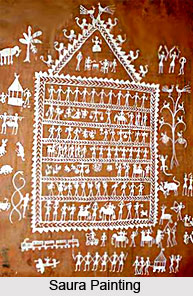 Another Indian tribal art of eastern zone that has remarkable impact on the tribal culture of India is the Painting of the Santhal tribe and can be seen in Bihar, Orissa and West Bengal. The Khovar and Sohrai paintings occupy a significant part in the tribal art of India. Khovar is the mural art form practiced by tribal women artists during the marriage season from January to June. The Kurmi Sohrai in the hill forests of Hazaribag plateau could not be more different in their source of inspiration and stylistic expression.
Another Indian tribal art of eastern zone that has remarkable impact on the tribal culture of India is the Painting of the Santhal tribe and can be seen in Bihar, Orissa and West Bengal. The Khovar and Sohrai paintings occupy a significant part in the tribal art of India. Khovar is the mural art form practiced by tribal women artists during the marriage season from January to June. The Kurmi Sohrai in the hill forests of Hazaribag plateau could not be more different in their source of inspiration and stylistic expression.
The Indian tribal art had also developed in the western zone of India. The popular tribal art forms of India include Warli Painting of southern Gujarat and Pichhwai Painting of northern Maharashtra.
Indian tribal art form had also flourished in the Bastar district in Madhya Pradesh. The structures of Bastar range from simple unadorned tribal shrines to ornately decorated village temples. Moreover, the Malwa, Nimar and Tanwarghar regions of Madhya Pradesh are known for their Mandana wall and floor painting traditions.
These paintings are not just decorations, but also spontaneous overflowing of religious devotion, intrinsically associated with socio-cultural ambiance. Mud plaster base is utilised in this form of Indian tribal painting, over which linear patterns are incised with the fingers. Myths related to creation are also the subject matters for Gond or Bondi paintings. Painted freehand, these two-dimensional paintings replicate their perception of life.
These arts can be elevated by providing proper facilities, the government of India, as well as other societies and associations, have made all efforts to promote such art forms. These highly developed senses of composition, with gestures to highlight a sense of mood and works of beautifully stylised imageries, bring their legends to a level of realism.
Influences on Indian Tribal Art
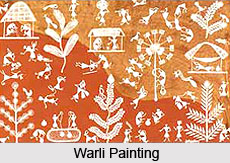 Influences on Indian Tribal art include the environment, philosophy, customs, traditions, the economic status of the community and the degree of the isolation from adjoining cultures. These influences had brought it out of its purely ritualistic and iconographic confines and allowed it to conquer its own contemporary artistic space
Influences on Indian Tribal art include the environment, philosophy, customs, traditions, the economic status of the community and the degree of the isolation from adjoining cultures. These influences had brought it out of its purely ritualistic and iconographic confines and allowed it to conquer its own contemporary artistic space
Factors Influencing the Indian Tribal Art
In post-independence India, two factors had enduring influences on Indian Tribal Art. The Indian tribal art showcases the life of those people who live away from modern urbanized civilization. These factors are;
1. The Government`s decision to promote a policy to encourage the Indian tribal art and to give paper to tribal communities
2. The creation of museums where this kind of unique art could be showcased.
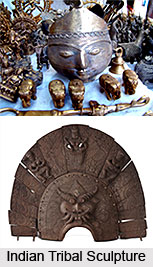 Artists were no longer confined to painting the walls of their homes. Paper, paint and other materials used by modern artists freed them physically, emotionally and psychologically to give expression to their existential problems.
Artists were no longer confined to painting the walls of their homes. Paper, paint and other materials used by modern artists freed them physically, emotionally and psychologically to give expression to their existential problems.
Religious Influence on Indian Tribal Art
Art cannot be separated from religion as they have a strong affinity. Religion needs form and art is one medium of outstanding effectiveness. Tribal life is attached with the faith in Gods and Goddesses. They have a number of their own Gods and Goddesses. Their male and female deities are imaginary. Religious beliefs vary from family to family, from tribe to tribe. It is precisely in the realm of religious art that the God is still a God for the believers.
Influence of Spirit World on Indian Tribal Art
Spirit world exists mainly because of superstitious beliefs the tribes inherit. Almost every tribal of this region is more or less connected with this belief. Indian tribes worship ancestors collectively on ceremonial occasions. The possession of spirits, ancestor`s worship or the worship of Shakti has adopted several creative forms of art.
Magic and Witchcraft in Indian Tribal Art
For magic or witchcrafts, the tribal sorcerers take help of numerous mysterious symbols. These symbolic representations with full of power cause the beautiful specimens of tribal magical art. They symbolise mysterious outer space as well as an inner space with their own motifs. The expression of the art form may be abstract or symbolic depending on the individual talent of the person.
Religious Influence on Indian Tribal Art
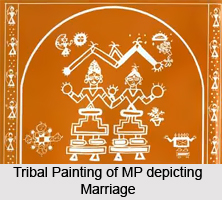 Religious influence on Indian tribal art reveals that the most common worshipped deities form a theme of tribal art. Tribal people have deep faith in gods and goddesses. Tribals are generally polytheists. They have their own gods and goddesses whereas they worship non-tribals at large. Many male and female deities are imaginary. Their religious beliefs, practices and rituals differ from family to family, from village to village and from tribe to tribe. God as a concept receives a local colouring. Traditional beliefs and usage have been the basis of religion. Each tribe worships God in a different form. They adopt each other`s gods easily.
Religious influence on Indian tribal art reveals that the most common worshipped deities form a theme of tribal art. Tribal people have deep faith in gods and goddesses. Tribals are generally polytheists. They have their own gods and goddesses whereas they worship non-tribals at large. Many male and female deities are imaginary. Their religious beliefs, practices and rituals differ from family to family, from village to village and from tribe to tribe. God as a concept receives a local colouring. Traditional beliefs and usage have been the basis of religion. Each tribe worships God in a different form. They adopt each other`s gods easily.
Motifs of Gods:
Baradeo: This is the chief deity of the tribes of some regions in India, who is supposed to reside in a Saj tree. It is also the clan god of the Gond tribe.
Thakur Deo is the village lord. He protects their villages. He is supposed to have his abode in a tree that may be Pipal, Semur, Mahua or Saj tree. He appears as less abstract. He is a jovial old god with long white beard.
Ghamsen: He is the son of Thakur Deo who has a separate shrine near the tree of Thakur deo. It is a pole around which a platform has been built. He protects the tribes against disease and misfortune.
Maswasideo is the god of hunting who is represented in a stone or brass image.
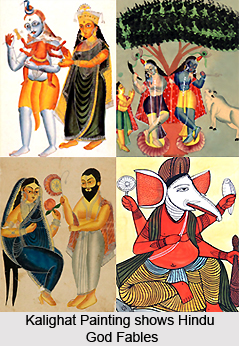 Narayan deo is the household god of Gond and Baiga tribes. He is worshipped on the door shelf.
Narayan deo is the household god of Gond and Baiga tribes. He is worshipped on the door shelf.
Bhimsendeo is considered as the rain god by the Gond and Baiga tribes. He has shrines and emblems. Holeradeo, Khila Muthiya and Patbaba are also the other popular Gods.
Motifs of Goddesses:
Most of the tribals are worshippers of female deities.
Dhartimai is the mother earth. She is the personification of the fertile soil.
Khermai: The tribals have no image of this deity. She is represented in a clod of clay in which a trident is struck. `Kher` means village. She is the protector of the village.
Ratmai: is supposed to protect the tribes from the danger in the dark. Nothing definite is known about her image but the place assigned to her in the house is near the spot of water vessels.
Burhi-mai is the goddess of small pox. Narmada mai is the goddess River Narmada.
Animal Deities:
Bagh deo: This is referred to the tiger deity.
Nag Devta: This is referred to the serpent.
Among Hindu gods and goddesses the tribes worship Lord Hanuman, Lord Ganesha and Mahisasuamardini. Apart from these mentioned gods and goddesses there are many local gods. Tribals name them according to their belief. Some times, it is very difficult to recognise the image of a particular male or female deity. But it is a universal fact that tribals are piously devoted to their religion and beliefs and this gives the tribal artists immense motivation for creation.
Influence of Customs in Indian Tribal Art
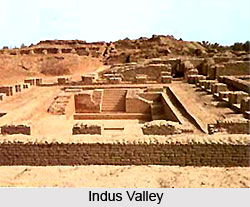 The art of the ceremonial ground and the form of designs used by the tribes reveal the influences of customs in Indian tribal art. The tribals are very much following their ancestral traditions with devotion and sincerity. Even till today, on wall and door, on comb and tobacco-case, the modern tribesman carves geometric and symbolic designs that are very old, going right back to the ancient Indus Valley civilization. Their sociological background compels them to follow the traditional way of life.
The art of the ceremonial ground and the form of designs used by the tribes reveal the influences of customs in Indian tribal art. The tribals are very much following their ancestral traditions with devotion and sincerity. Even till today, on wall and door, on comb and tobacco-case, the modern tribesman carves geometric and symbolic designs that are very old, going right back to the ancient Indus Valley civilization. Their sociological background compels them to follow the traditional way of life.
Children in tribal communities learn their traditions from their mothers, parents or even society. While growing up, it is transferred to generations. There is a possibility that a lady who has grown up in the tradition of making ritual houses may draw more sharp lines or she may conceptualize a form or she may change the trend of the tradition. It is only because of her individual nature or due to different tendencies or impulses. However acceptance of new ideas is extremely slow.
The art of the ceremonial ground and the form of designs are mostly governed by the laws of the secret grounds and the dictates of the old men. The birth, marriage, death and funeral, their houses, household utensils, dress, ornaments, food and meals are all traditional. The tribes in India have been influenced by certain traditions of the communities who are around them. Hindus are the major neighbouring community. There have been several points of contact between the Hindus of the area and tribal communities living within it.
However, the current art of tribals are very creative and original and has more or less conventional touches. Most of their art activities are due to their tradition and taboos. Their various animistic, pantheistic and anthropomorphic trends have survived in art till today. Widely covered art of well-decoration and tattooing among the Gond and Baiga tribes can be purely attributed to their tradition. The physical conditions of the region play vital role in the life of the tribals. The natural surroundings affect the tribals to create or not to create, directly or indirectly an artistic creation. While talking about tribal material of art one must keep in mind the limited resources of material in its ready-made condition. Materials help an artist to establish his original style. Earthen colours, clay, mud, stones, iron, woods, bamboo, feathers, leaves and bones are the important materials used.
Themes in Indian Tribal Art
Indian Tribal Art is always delineated upon positive themes and ideas like birth, life, harvest, journey, jubilation or marriage. The Indian tribes pay due veneration and reverence to Mother Earth and its crucial elements. It is a tribal art form where life and ingenuity are fused. Tribes have made their own place in the contemporary world of art. The symbols portray the imaginations of men and these imaginations are the representative emotions of the people of a particular period and society.
Types of Indian Tribal Art
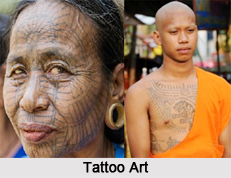 Indian Tribal Art is one of the most fascinating parts of the tribal culture in India. The treasure of tribal arts is immense and has an astounding range, diversity and beauty. Indian Tribal Art takes on different manifestations through varied medium such as pottery, painting, metalwork, Dhokra art, paper-art, weaving and designing of objects such as jewellery and toys. Indian tribal paintings and sculptures are of exceedingly high quality and are documents of their cultural heritage.
Indian Tribal Art is one of the most fascinating parts of the tribal culture in India. The treasure of tribal arts is immense and has an astounding range, diversity and beauty. Indian Tribal Art takes on different manifestations through varied medium such as pottery, painting, metalwork, Dhokra art, paper-art, weaving and designing of objects such as jewellery and toys. Indian tribal paintings and sculptures are of exceedingly high quality and are documents of their cultural heritage.
• Tribal Painting: Tribal paintings usually belong from the remote tribal regions, in forests or high up in the mountains. Indian tribal paintings bearing illustrious backgrounds include Saura paintings, Gond paintings, Bondi paintings, Pithora paintings, Warli paintings, Thanka, Patta Chitra, Kurumba paintings, Khovar paintings, Pichhvai painting, Miniature painting etc. Paintings were done on the walls, palm leaves, wood blocks and cloths.
• Tattoo Art: Tattoos have been around in India since ancient times. Tattoo or body art was very prevalent among the Tribes of the Northeast as they regarded tattoos as a sign of strength, courage, and virility because of the pain associated with the piercing process. Among the Toda tribe of South India, the hands and calves and shins are tattooed with the same geometric patterns used in their embroidery.
• Dhokra Art: Dhokra is an ancient tribal art tradition prevalent in India in the eastern states of West Bengal, Odisha, Jharkhand and Chhattisgarh. This elegant craft dates back to the pre-historic times of Harappa and Mohenjodaro period of Indus valley civilisation. Dhokra statues are revered all over the world for its primeval plainness and enthralling folk motifs.





















